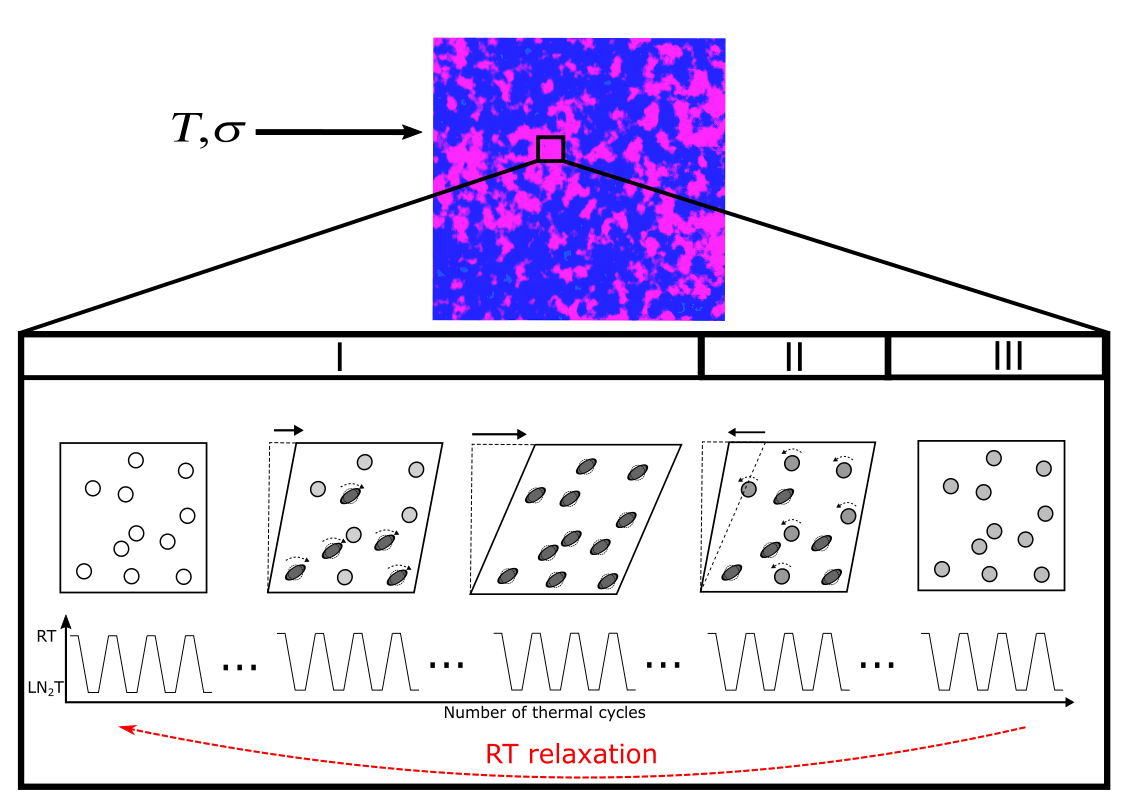Metallic glasses (MGs), in comparison with crystalline alloys based on the same metals, have high yield stress and exceptionally high elastic strain limit, but their plasticity is limited. When in more relaxed (aged) states (i.e. states of lower enthalpy and increased density) achieved by annealing, or by forming the glass on slower cooling from the liquid, MGs have worse plasticity and can become profoundly brittle. Interest, therefore, focuses on treatments of MGs to achieve the reverse, i.e. rejuvenation to states of higher energy, lower density, and better mechanical properties. Cryogenic thermal cycling (CTC) of a MG, between room temperature and liquid-nitrogen temperature, achieves rejuvenation and improvement in mechanical properties. The effects can be as dramatic as a near-trebling in impact toughness.
This paper shows that the rejuvenation effects of CTC decay over about one week at room temperature: the regained youth is swiftly lost! While it might be desirable to retain youthful plasticity for longer, these findings open significant scientific questions on how so much energy can be stored, and mechanical properties so profoundly affected, in MGs via transient anelastic-like processes.
Figure: The proposed model for structural evolution and energy storage in a metallic glass subjected to cryogenic thermal cycling. While retaining memory of the original glassy state, changes in energy are achieved through the shearing of soft spots embedded in an elastic matrix.
M.B.Costa, J.J. Londoño, A. Blatter, A. Hariharan, A. Gebert, M.A. Carpenter, A.L. Greer, "Anelastic-like nature of the rejuvenation of metallic glasses by cryogenic thermal cycling", Acta Materialia 244 (2023) 118551

